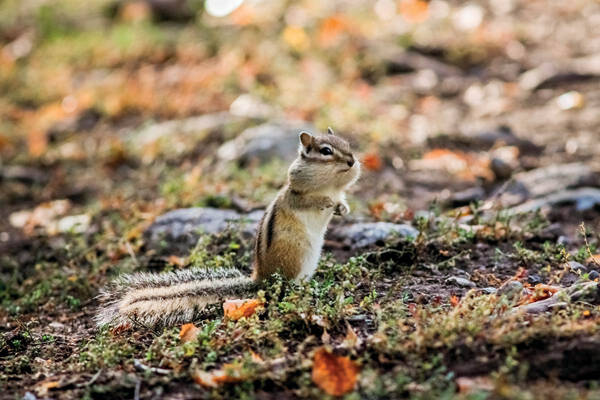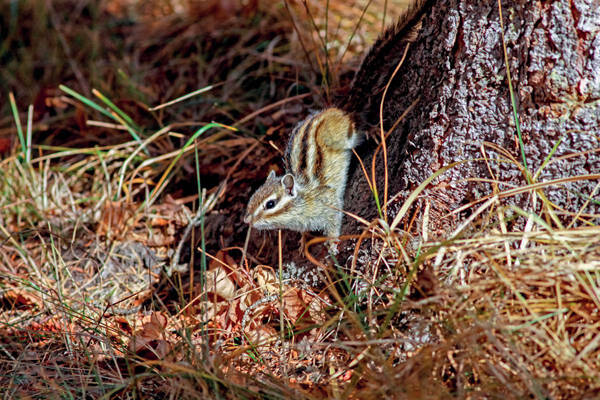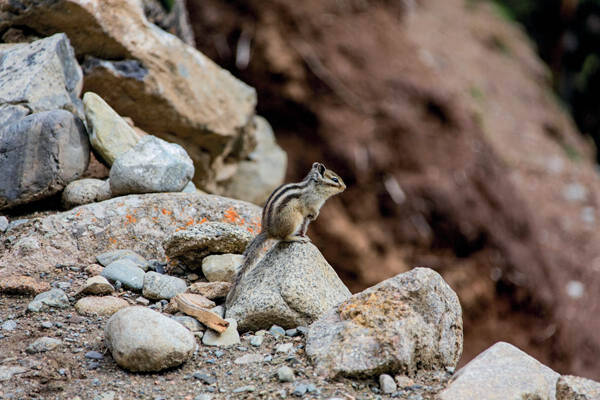Tamias sibiricus
IUCN
LCBasic Information
Scientific classification
- name:Tamias sibiricus
- Scientific Name:Tamias sibiricus, birch mouse, five-browed squirrel, flower civet stick, chipmunk
- Outline:Rodents
- Family:Rodentia Sciuridae Chipmunk
Vital signs
- length:About 15 cm
- Weight:More than 100g
- lifetime:
Feature
There are several parallel longitudinal stripes of light and dark on the back of the body.
Distribution and Habitat
In China, it is distributed in Northeast China, North China, Northwest China, Henan and Sichuan. Abroad, it is distributed in Europe, Mongolia, Japan, the Korean Peninsula and other places.
It lives in coniferous forests, mixed coniferous and broad-leaved forests, broad-leaved forests and shrubs near farmland, and often builds nests in tree holes and stone crevices.
Appearance
A relatively small squirrel. There is no tuft of hair on the tip of the ear, there is a dark stripe between the eye and the ear, and another dark stripe extends from the mouth and nose to under the ear. The snout is relatively long, with cheek pouches, which can temporarily store food. The fur on the back is grayish yellow, with 5 obvious black vertical stripes (hence some places call chipmunks "five eyebrows"), of which the black stripe in the middle of the back is the longest, extending all the way to the buttocks. The ventral surface of the body is yellowish white or light khaki. The hair at the end of the tail is relatively long, with white tips, and the overall fur color is darker in summer than in winter.
Details
Chipmunks belong to the genus Chipmunk of the family Sciuridae. They are named for the several light and dark parallel vertical stripes on their backs. They are medium-sized, with long tails and long, fluffy, broom-like tail hairs that extend to both sides. They have slightly long limbs, and their ears are clearly visible outside the fur. They have a wide range of habitats, including coniferous forests, broad-leaved forests, mixed coniferous and broad-leaved forests in plains, hills, and mountains, as well as areas with dense shrubs. They generally live in forest areas, forest edge shrubs, and agricultural areas with many low mountains and hills. They often dig holes at the roots of trees and shrubs, or live in burrows in terraced ridges and natural stone crevices.

Chipmunks have a mixed diet and eat beans, wheat, cereals, and fruits. In spring, they invade farmland to dig up and eat the seeds of crops that have been sown. In autumn, they use their cheek pouches to steal large amounts of grain, with a warehouse storing up to 5 to 10 kilograms of grain. They also climb trees to steal walnuts, apricots, apples, pears, etc. Because they don't have a strong memory of where food is stored, they play a "sowing" role to a certain extent.
Chipmunks are active on the ground during the day, most active at dawn and dusk, less active in trees, good at climbing trees, agile and curious, can climb steep slopes, cliffs, and tree trunks, and make shrill calls from time to time. They are semi-hibernating, with a small amount of activity in early spring and late autumn. The largest number of them is in mid-July throughout the year, which is related to the young mice leaving the nest to participate in activities.
Most chipmunks dig holes underground to live, and also nest in tree holes and even occupy artificial nest boxes to attract beneficial birds. The caves can be divided into spring and summer caves and wintering caves: spring and summer caves have no food storage room (or the food storage room of last winter is blocked), the nest room is shallow, some of the shortest vertical distance from the ground is about 10 cm, and some are 30~50 cm. The length of the cave varies, and the longest can reach two or three meters. There are 1~8 hole openings, and the hole opening is less than 50×50 mm. Chipmunks raise young animals in this cave. Wintering caves usually have a food storage room, and the cave is deeper, with a vertical distance of about 90 cm or deeper from the ground. The wintering caves of chipmunks along the upper reaches of Heilongjiang River can be up to 130 cm deep, and the caves rarely branch. It is common to see shelters at the entrance of the cave, and there are hollow fallen trees, rock crevices, pine tree holes or earth holes nearby as temporary hiding places.

Chipmunks are warm-blooded mammals. When winter is approaching, they eat a lot and store fat to prepare for hibernation. In winter, chipmunks stop eating, their body temperature drops to 1°C, and they hibernate. At this time, their pulse beats once a minute, maintaining the lowest metabolic cycle to prevent freezing. When spring returns to the earth in April of the following year, they suddenly wake up. In less than two hours, their body temperature rises from 1°C to 37°C, and they start eating, until they hibernate again at the end of October.
They breed 1-2 times a year, giving birth to 4-5 pups per litter. [8] They reach sexual maturity in three months, and the pregnancy and lactation periods are both one month.
Chipmunks have high ornamental and economic value. Chipmunks are small and cute, with fluffy tails, and are flexible and cute. They are docile and easy to tame. They can be raised in cages as ornamental animals. Their fur is light and warm, with fine and dense hair and a glossy and beautiful color. Especially in winter, the fur is soft and dense, and the leather value is higher. It is suitable for making precious women's fur-facing coats and scarves, hats, leather collars, gloves, etc. The appearance is comparable to mink and fox fur. The tail hair is the raw material for making high-end brushes and precision instrument brushes. The whole body of the chipmunk can also be used as medicine, which has the functions of regulating qi, regulating menstruation, eliminating accumulation, and relieving pain. It can treat tuberculosis, pleurisy, irregular menstruation, hemorrhoids, etc.

Likes to eat seeds, nuts and berries. They often eat seeds sown in farmland in spring and steal stored grain in autumn. Chipmunks are carriers of infectious diseases such as Lyme disease and rabies, and contact with chipmunks can be fatal to people. Moreover, because the infection caused by chipmunks is often difficult to be discovered in time, the consequences will be more serious.








